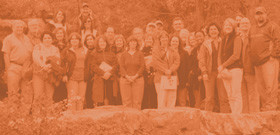The D&L Blog

When the cherry blossoms bloom and leaves begin to reappear, we know spring is truly here. And April is a time to celebrate. To celebrate rebirth, to celebrate growth, to celebrate the Earth. In this month’s Journey Through the D&L blog, we discuss the Anthracite Region.
This region – containing Luzerne and Carbon counties – is aptly named. A long heritage surrounding the mining and transportation of coal can certainly leave its mark. But we want to recognize something else. These communities have made great strides in conservation and education. Below are a few of many organizations that highlight these efforts.
Lehigh Gap Nature Center
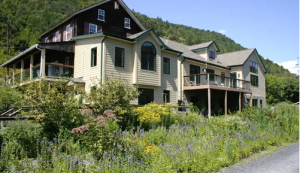
This first organization stands as the entryway to the Anthracite Region – at least on the D&L Trail map it does. Mile 94 marks the beginning of Lehigh Gap Nature Center (LGNC).
Before it was LGNC, it was the Palmerton Zinc Pile Superfund site. A Superfund is a highly contaminated area, as recognized by the Environmental Protection Agency. Only after years of hard work and dedication was the site able to become what we now know it as.
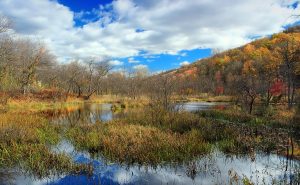
Today, the 756-acre wildlife refuge includes the restored Superfund site as well as other unaffected habitats. When traveling the grounds, you can find ponds, bottomland wetlands, forested slopes, cliffs, and even a savanna at higher elevations.
If you would like to visit LGNC, you can find driving directions here or visit their website here.
You can also visit Osprey House, their main visitor and educational center. From solar panels to storm water management, the Osprey House itself is a wonder. But what goes on inside is just as important. LGNC is dedicated to connecting people with nature through education. Virtual programming, workshops, field trips, and an abundance of resources don’t even begin to cover all that they provide.
Carbon County Environmental Education Center
Just a short drive away from historic Jim Thorpe, Carbon County Environmental Education Center (CCEEC) is next. With a motto like “Conservation through Education,” how could we not include them?
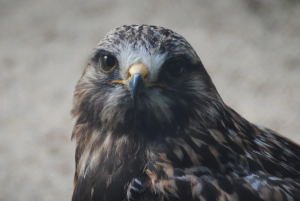
The CCEEC building is a 100-year-old converted dairy barn that has plenty to admire inside. With two classrooms full of interactive displays and a lending library, visitors are encouraged to ask questions. And maybe more importantly, touch. There are even live animals such as ferrets, doves, bats, and snakes. CCEEC’s reputation as a premier wildlife rehabilitation hospital ensures that.
Outside is just as fascinating. Located in Mauch Chunk Lake Park, CCEEC is surrounded by 70 acres of woodland, wetland, and meadow. There is a boardwalk trail that leads guests through an enclosure that houses rehabilitated eagles, hawks, and owls. A ten-minute walk from the center will also lead guests to a lakeshore bird blind, picnic pavilion, and children’s play area
Visit the center here, or take a look at their website here. They have public programs, rafting trips, and even a 5k run on the D&L Trail through Lehigh Gorge State Park.
Hickory Run State Park Visitor’s Center
This next location is a bit different from the previous two, and also the youngest. In 2020, the Hickory Run State Park (HRSP) Visitor’s Center opened its doors to the public.
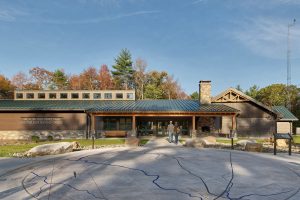
As the “gateway” to HRSP, the building represents the region’s conservation heritage and connection to nature. This can be observed through a 2,400ft exhibit located right in its lobby. The self-guided exhibit details the region’s history, as well as the natural features that have put it on the map.
And although it’s best known for its camping and natural areas, HRSP also offers a variety of educational programs. These programs are often provided in its two classrooms and open to the community. Of course, it is not unusual to step outside to help with clean-ups, learn about fly fishing, or even go for an educational hike.
You can learn more by visiting DCNR’s website and checking out the Hickory Run State Park FaceBook page. Covering 15,990-acres, a landscape rich in history and carved by glaciers awaits you.
DLNHC looks forward to continuing partnerships with these organizations and many others that have shared missions and collaborate on fun, educational events.
Written by: Gianna Caruso, Communications Coordinator
Sources
- Lehigh Gap Nature Center: https://lgnc.org/
- Carbon County Environmental Education Center: https://www.carboneec.org/
- DCNR Hickory Run State Park: https://www.dcnr.pa.gov/StateParks/FindAPark/HickoryRunStatePark/Pages/default.aspx
- Converse Winkler Architecture: https://www.cwarc.com/portfolio/new-visitor-center-hickory-run-state-park/






